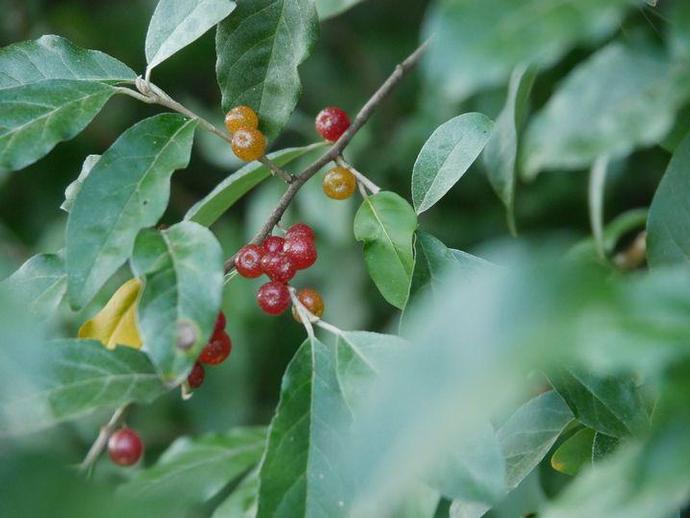November 25, 2021
Happy Thanksgiving!!
Ben is taking a well-deserved vacation the rest of this week, so we're reaching into the archives for today's #BenInNature update presented by our friends at Carter Bank & Trust! The following post was originally published on September 1, 2020.
I always try to make these daily posts a celebration of nature, a chance to find something fascinating or beautiful in every creature. Today, however, I'm going to make an exception, because I straight-up hate today's plant!
This is autumn olive (Eleagnus umbellata), also known as Japanese silverberry or spreading oleaster. It is indigenous to eastern Asia, but it is an invasive species in the eastern U.S. In the early 1800s, it was purposely introduced (like most of the worst invasives) as a form of erosion control and as an ornamental for gardens. We learned too late that it spreads aggressively and is very difficult to eradicate.
Why do I hate autumn olive so much? I have a ton of it growing on my property, and it is a terrible nuisance. It grows extremely quickly; if you cut it down to the roots, it will grow right back unless you use a harmful herbicide; and to top it all off, it has thorns that you don't see until they've embedded themselves in your palm. I recently spent about two hours chainsawing a patch of autumn olive, and when I was done, the patch looked even bigger than it did before I started.
Autumn olive does have a few good features; it fixes nitrogen in the soil, it provides shelter for wildlife, and birds love the berries (which the birds then spread all over creation). However, if you see a small amount of autumn olive growing on your property, I strongly advise you to clear it out as soon as possible. This stuff gives kudzu a run for its money.
ABOUT #BenInNature
Social distancing can be difficult, but it presents a great opportunity to become reacquainted with nature. In this series of posts, Administrator of Science Ben Williams ventures outdoors to record a snapshot of the unique sights that can be found in the natural world. New updates are posted Monday - Friday, with previous posts highlighted on the weekends. This series of posts is made possible thanks to the support of VMNH Corporate Partner Carter Bank & Trust (www.cbtcares.com).
NATURE PHOTO IDENTIFICATIONS
If you discover something in nature that you would like help identifying, be sure to message us right here on Facebook with a picture (please include location and date of picture) and we'll have our experts help you identify it!

 Hours & Admissions
Hours & Admissions Directions
Directions

